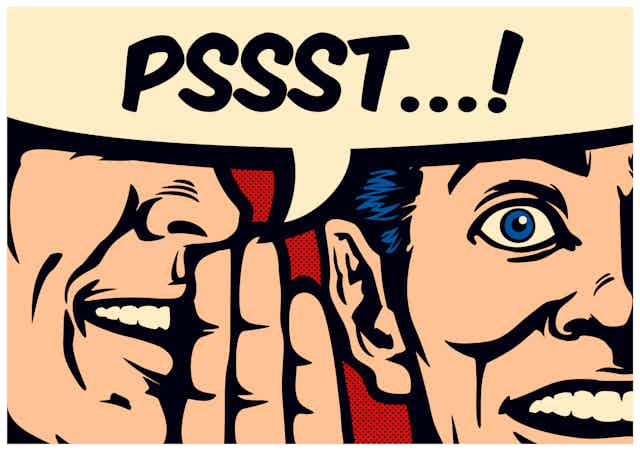Part four of the Expert guide to conspiracy theories from The Anthill podcast explores whether the internet has been a game changer in helping conspiracy theories go viral. First, though, we find out how conspiracy theories spread before platforms like Facebook and YouTube came along and gave everyone the power to broadcast their thoughts to the world.
It’s important to differentiate between the producers of conspiracy theories and the consumers, which philosopher Quassim Cassam talked about in part one of the series. The producers often push a political ideology. They are also very good at dressing up their theories in academic language. This can make it difficult for the non-expert to recognise a conspiracy theory as bogus and is important for their initial spread.
But what makes these ideas really take hold is the people that buy into them – the consumers. Annika Rabo, an anthropologist from Stockholm University in Sweden, tells us how people enjoy spreading conspiracy theories because it can make them seem funny or clever. Most people don’t just spout a conspiracy theory as they hear it, they will often adapt it to their situation – and their audience.
Michael Butter, American studies scholar at the University of Tübingen in Germany, gives us some insight into the history of how conspiracy theories spread in the 19th and 20th centuries. Some were preached from pulpits and incited riots. Then, advances in printing technology made it easier for conspiracy theories to spread. Publishers made money selling fanciful stories – some that were openly fictional, others that were fake exposés. Butter says:
Very much like today, [conspiracy theories] were definitely also driven by financial incentives because [the perpetrators] made a lot of money then from books and from speaking engagements off the back of them.
We also delve into the world of conspiracy theories as entertainment. Clare Birchall, reader in contemporary culture at King’s College London, talks us through literature in the 1960s, 70s and 80s that engages with conspiracy theories in a playful way and uses them as a device to tell stories. We find out how The X-Files did something similar in the 1990s.
The internet has changed the game for communication in terms of how quickly information travels and how it gives everyone a platform to broadcast their views. But Stef Aupers, professor of media culture at the University of Leuven in Belgium, explains that this doesn’t necessarily mean conspiracy theories reach more people. In large part, this is because most people end up in echo chambers online:
Spaces like 4chan and 8chan, where people develop alternative ideas in the fringes, are potentially creating communities where people are just confirming to one another what they already believe.
So the internet makes it easier for conspiracy theorists to connect and these echo chambers help solidify their views. Some conspiracy theories give rise to stronger communities than others. Aupers says that the more social and political the issue, the more likely it will spill out of an online forum into real life.
Correction: This podcast refers to the 2019 mass shooting targeting Mexicans in El Paso, Texas as happening in El Paso, New Mexico.
The Anthill podcast is produced by Annabel Bligh and Gemma Ware. Sound design is by Eloise Stevens, with original music from Neeta Sarl and audio from Epidemic Sound. A big thanks to City, University of London, for letting us use their studios.









